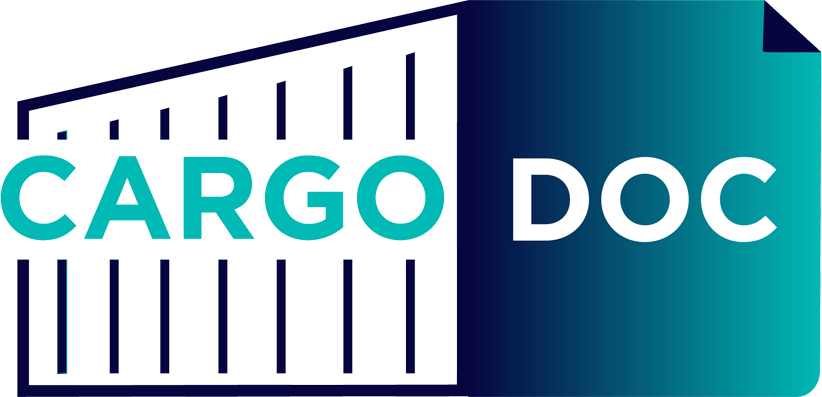In 2023, logistics and supply chains will face numerous and unanticipated interruptions, including the economy, weather, political issues, and much more. As businesses prepare for what lies ahead in 2023, here’s what carriers and shippers need to know and how to get ready.
Digitization / Data / Visibility
While paper is still widely used in supply chain procedures, digital communications are rapidly replacing it, and this trend is likely to continue in 2023. Companies are using digitization to mine data for important insights and to expedite informed decision-making. Data analytics and intelligence improve customer visibility, which is still one of the most difficult tasks for shippers today. When a shipper works with several vendors, it’s tough to keep up with the newest shipment changes without calling each source and piecing together the legal papers for transportation at the same time.
This inconvenience not only wastes time and affects operating efficiency, but it also raises the margin of error. Any shipper may have full visibility on their shipment by digitizing the supply chain process and collecting data throughout the life of a load, saving them time and energy and making them more resourceful. This surge in digitization, data, and visibility will continue in 2023, becoming even faster and more accurate as old methods and paper become obsolete.
Logistics firms are expanding their products and investing in smart implementations
According to an Accenture study survey of logistics professionals, changing customer expectations are the most critical driver of change in the sector today. According to the report, logistics companies believe that their customers want them to provide a broader range of logistics services, “either by expanding their service portfolios to include upstream and/or downstream solutions, or by expanding their existing services across more geographies, industries, or modes of transportation.”
According to Rentschler, firms are growing smarter and more mature in terms of implementation, while relying on consultants to ensure a smooth transition. “We’ve seen organizations spend money on new technology or offshoring functions and only achieve 5% of the potential ROI because they didn’t invest effectively in implementation.” A trucking company will acquire a truck and know exactly how much money it will make, but they will disregard investments such as technology or outsourcing where they can gain 10% efficiency across the board.”
Rising diesel prices
Diesel fuel prices in the United States increased by 55% between January and June 2022. The Russia-Ukraine situation has been a major contributor, as has the international rule IMO 2020, which went into effect at the beginning of the year. Indeed, the geopolitical concerns produced by the Russia-Ukraine crisis have created a major demand-supply gap in the global trade market, and higher fuel costs will almost certainly restrict global GDP growth.
Sustainable shipping and environmental regulation
Environmental regulation and sustainable shipping – There are currently minimum fuel efficiency and maximum emissions regulations for gasoline and diesel cars in the worldwide trucking business. Increasing environmental restrictions and consumer expectations to reduce pollution and greenhouse gas emissions are driving stakeholders in the logistics industry to reorganize and innovate in order to embrace green infrastructure and electric fleets. The Securities and Exchange Commission’s (SEC) latest ESG law mandates any public business to disclose climate-related disclosures in their 10-K. Companies would also be required to report climate change risks.
Automation
Technology and automation in logistics operations have become critical in addressing industry pain points and managing shipments at lower prices and in a timely manner. The transportation and warehousing industry has the third-highest automation potential of any sector, according to the McKinsey Global Institute. AI, machine learning, computer vision, connected IoT networks, and blockchain can all be used to simplify, improve, and optimize logistics processes. In this regard, the rise of automation is likely to continue in 2023.
Integrating automation into your workflow for a more streamlined process
Manual workflows take a long time. Over 40% of the workforce spends at least 10 hours each week performing repetitive chores that are triggered by manual workflows. Data collection, data entry, approvals, and updates are examples of these tasks.
Unsurprisingly, over 66% of the workforce in a recent survey agreed that automation may decrease human errors and increase organizational productivity.
As a result, the greatest opportunity for process automation is to optimize workflows in such a way that hours lost due to repetitive and manual operations that could be automated are recovered.
Furthermore, manual operations frequently result in human errors that cost firms a lot of money. Standardized workflows built using low-code automation solutions can assist firms in reducing simple human errors.
Many property management companies are optimizing their workflows by implementing integrated access control systems that are powered by AI and ML technology. Some businesses go a step further, connecting their access control systems with building automation systems to create a process that automatically begins HVAC heating/cooling when someone enters the premises.
Data entry automation for logistics in 2023
Automation and artificial intelligence (AI) have been on our radar for several years. It is becoming more widespread in a range of procedures by 2023. Automation, which is basically a machine that performs a sequence of tasks, has existed for decades. Automation makes use of technology to eliminate the need for human interaction. Because automation lacks brains, it can only accomplish the tasks that have been pre-programmed for it.
Data entry is vital in logistics. The employees who are responsible for executing this task on a broad scale, however, will undoubtedly find it tiresome and repetitious. Additionally, data input requires attention to detail despite the boredom it causes the worker. By automating the data entry process, employees will have more time to devote to important, high-impact tasks that will empower and advance both them and the organization as a whole.
3 Ways Logistics providers are automating manual process using automation
- Paperless Invoices using Intelligent Character Recognition
- Predictive analytics in supply and demand planning
- AI for shipment scheduling and tracking
CargoDoc & and its benefit for freight forwarders in the year 2023
Every logistics business manages a large volume of paperwork every day.These documents can include contract agreements, freight bills, bills of lading, CMR transport documents, etc.Many of these are sent via email, while others of them are actual documents. Logistic businesses can save a lot of time and get better real-time tracking from a single location by collecting and converting all these formats to a digital footprint.
CargoDoc is a smart, customized AI Powered OCR solution developed to help Freight forwarders and 3PLs enter data into CargoWise accurately and swiftly.
It is jointly developed by Soft Freight Logic and Deep Cognition, two leaders in the logistics technology industry.
The CargoDoc team has a local presence in the US, and we have domain expertise in Customs of over 15 years with CargoWise Platinum Status over the last 5 years. Our team comprises more than 25 CargoWise accredited consultants. The vast domain knowledge and experience on customs, tax laws, etc., which are unique to the supply chain industry, have enabled us to create the most suitable smart OCR solution in the market for Freight forwarders and 3PLs.
The decades of domain knowledge and expertise in the industry by its creators make CargoDoc the best smart OCR solution for data entry into CargoWise for freight forwarders and 3PLs.
Mail us at sales@cargodoc.ai or click here for a product demo.


